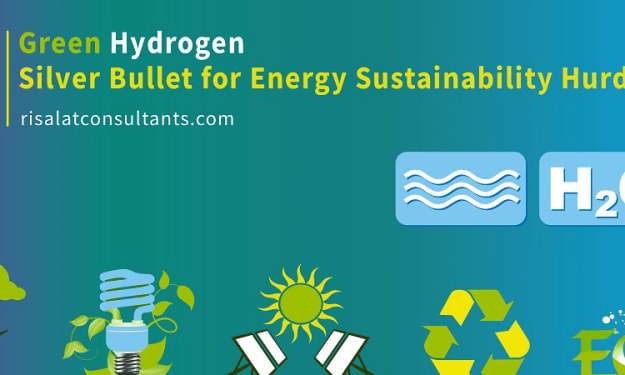Powering Afghanistan with Renewable Energy
by Risalat Consultants International

Lights, Heaters, Boilers, Washers, Chargers, Pumps– nothing can convey technological progress and development better than secure energy and electricity supply. Although access to electricity keeps climbing globally and has reached 87% of the World’s population, there are still many countries that are home to people without electricity.
Afghanistan – the country with a vast potential for energy production – suffers from one of the lowest rates of the population access to grid electricity. According to the estimates, only 30% of the citizens have access to electricity, while the rate of reliable access is somewhere between 10-15% only. Connecting Afghans to Energy supply remains one of the paramount challenges until today, especially in rural areas where three-quarters of Afghans live and only 11% are linked to the grid.
Although in recent years, with international assistance, Afghanistan’s electricity sector has expanded significantly, the major progress is still dependent on imported electricity and costly diesel power. The country channels 80% of its energy from Tajikistan, Uzbekistan, Turkmenistan, and Iran and spends approximately USD280 million yearly. Importing electricity from these countries has significant drawbacks that are associated with the reliance on politically unstable neighbors and the lack of certainty about future prices. What’s more, the neighbors sell the surplus of their energy production to Afghanistan, and once they face shortage themselves or even a technical difficulty, they stop selling. Such a trend leaves the Afghan energy supply vulnerable to blackouts, especially throughout the dry year.
Reasons behind low electrification rates
For decades, Afghanistan’s secure power supply has been disrupted by conflicts. As a result, the country’s energy generation, transmission, and distribution infrastructure were demolished. Whatever remained, has been stretched far beyond capacity, limiting residents the access to power and light.
Afghanistan’s Power Potential
Afghanistan is deemed to have plenty of resources, both renewable and non-renewable. Therefore, the country demonstrates the potential for becoming a self-sufficient nation with the development of indigenous power resources. In contrast with those developing countries that struggle to identify the sources of clean energy supply, Afghanistan boasts of Wind, Hydro, Solar, and Geothermal Assets. By utilizing these, the country would not only meet its energy needs, but mitigate climate change, safeguard the environment, and charge its way to the sustainability.
Solar Energy
There are many unrealized opportunities for solar power, especially in the southern part. Afghanistan averages 8.8 hours of sunlight per day, thus the nation could well capitalize on such sunshine. Afghanistan can potentially produce 220,000 MW of solar power with its 300 sunny days per year. This proposition is built upon the fact that the country has huge spaces in the desert of Kandahar, Helmand, Hairatan, and Laghman that are well-suited for large-scale solar energy creation with extraordinary levels of productivity. There are certain projects being implemented in Kandahar but at a very slow rate. Thus, there shall be more underway.
Photovoltaic systems can be a very viable alternative in every sense for Afghanistan. Not only they are cheaper, but safeguard the environment and mitigate climate change as well.
Hydropower
Until today, Afghanistan has not utilized the full capability of its ample hydroelectric energy sources. The country is expected to have more than 23’000 MW of untapped hydropower potential that can be utilized in the form of micro, medium, and large-scale plants. In recent years, the Afghan government has been focusing on mobilizing resources for the construction and rehabilitation of hydropower plants. Some of the examples are the nation's largest Naghlu Hydropower, as well as Salma Dam and Kajaki Plant. In addition to international assistance and public financing, the country is trying to leverage private sector resources to expand the infrastructure.
Wind Energy
Afghanistan could benefit from investing in wind energy as well. According to the estimates, with the wind speed exceeding 6.8 m/s, 150GW shall be produced, where the total amount of usable energy would be 67 GW.
An estimated 90% of Afghanistan’s wind capacity is concentrated in the provinces of Herat, Farah, and Nimruz. However, there is no national electrical delivery network that could link these provinces to the other parts of the country.
Geothermal Energy
Geologically, Afghanistan lies on three tectonic plates. Their motion and collision result in hot springs, hydrothermal minerals, volcanoes, and magma rocks. Although considered, the actual geothermal potential of Afghanistan is yet unexplored. Due to their specificities, the largest opportunities can lie in the southern, eastern, and western parts of the country.
Obstacles for Afghanistan’s Renewable Energy Development
The main barriers to fully exploiting the benefits of Afghan renewable energy sources can be categorized into 4 classes:
• Security Concerts and Political Instability – that hinder reliable information collection and cooperation. Conflicts, war, and weakened centralized governance undermine the process of acquiring the necessary resources to be invested in the nation’s energy needs.
• Lack of field expertise, as well as technical barriers and mismatches
• Economic Circumstances and Poverty that limit available financial resources that can be directed to renewable energy development
• Regulatory Framework and Community Awareness – the country has a significant lack of a realistic timeline for project implementation, as well as poor community awareness on the benefits of such investments.
About the Creator
Risalat Consultants International LLC
Risalat Consultants | Business - Consulting - Research - Workshops
https://risalatconsultants.com/






Comments
There are no comments for this story
Be the first to respond and start the conversation.